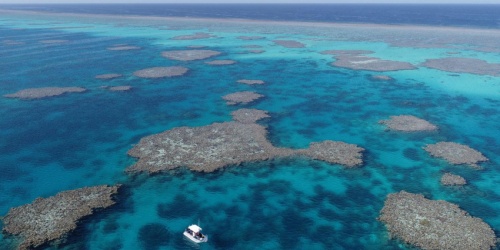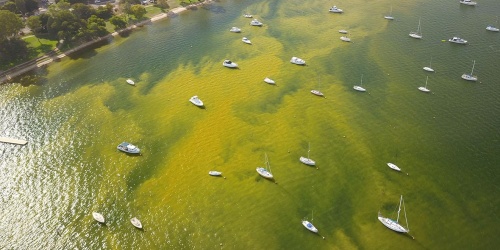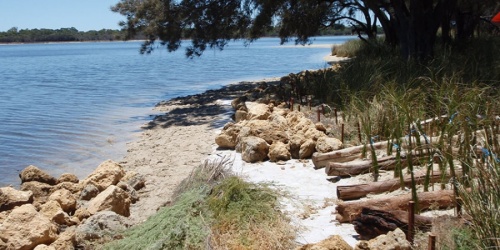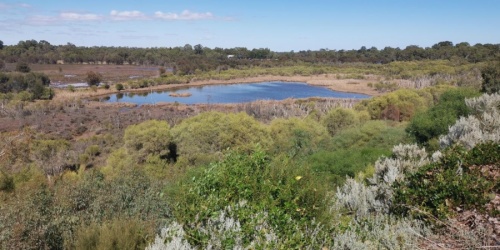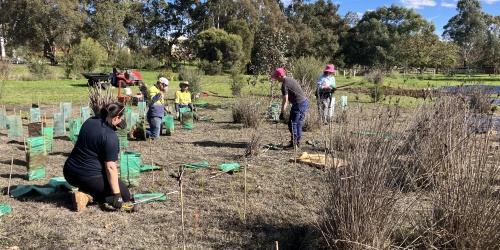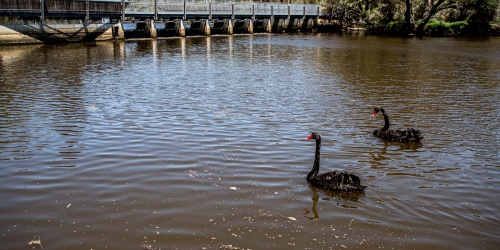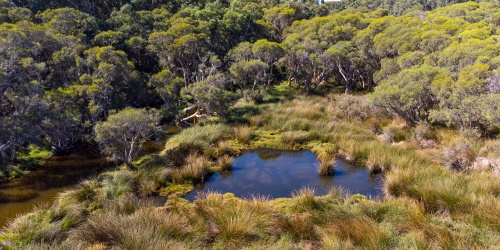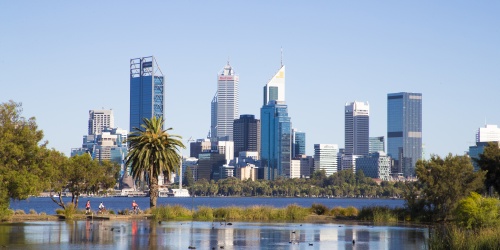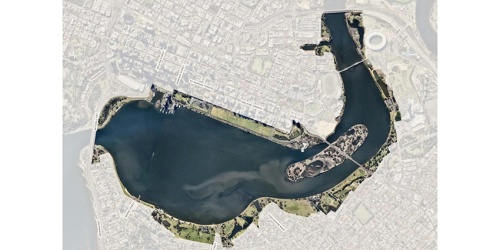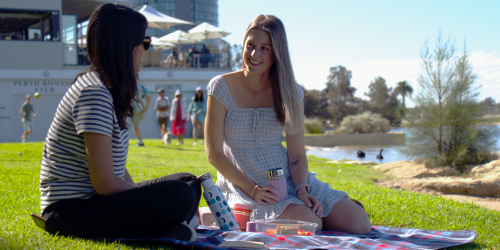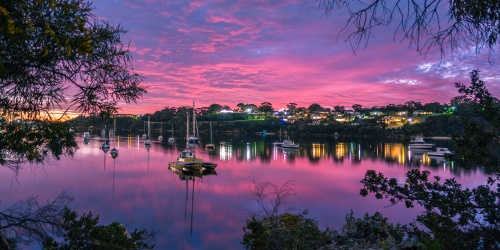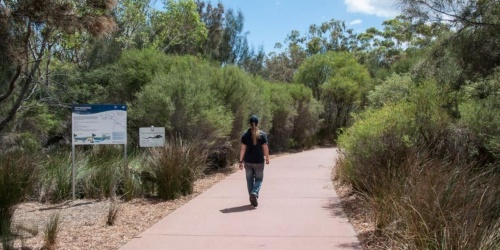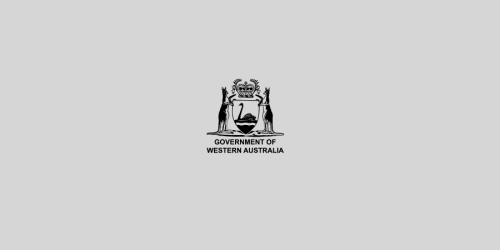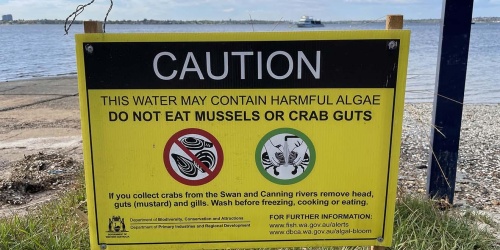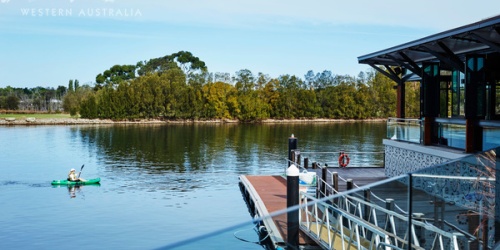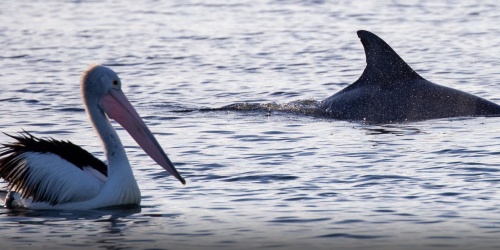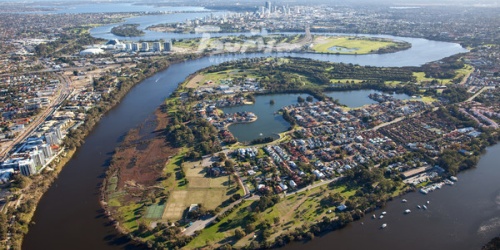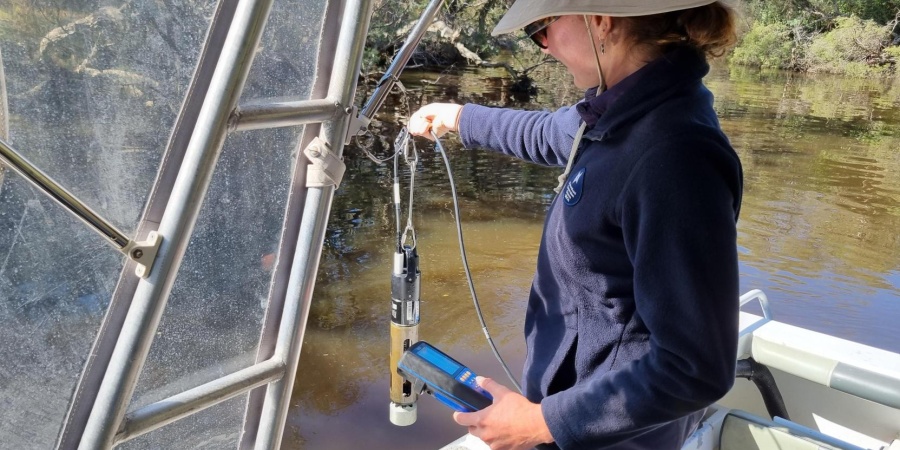
Water quality monitoring in the Canning River. Photo by A. Gillies, DBCA
Rivers and Estuaries Science Program
DBCA's Biodiversity and Conservation Science division has a key role in monitoring, evaluating and reporting on the environmental health of the Swan Canning Estuary and its catchment.
Environmental monitoring is focused on water quality and biological indicators including fish and seagrass.
What we do
- develop an understanding of waterway function
- track trends
- measure compliance against management targets
- monitor the extent and severity of low oxygen and algal blooms
- report changing conditions to the community
- inform catchment models
- guide management decisions and incident response
- determine the effectiveness of estuary and catchment management measures
Microalgae activity
The weekly Microalgae Activity Report (MAR) provides information on microalgae activity levels, the probability of discoloration and/or scum formation, and potential warnings. This is based on data collected at 21 routine monitoring sites throughout the Swan Canning river system. Concentrations of chlorophyll-a, a plant pigment, are used to estimate microalgal activity.
This week's Microalgae Activity Report
Week starting: Tuesday 28 April 2025 (next update scheduled for 9 May 2025)
- Microalgae activity was high in the following areas:
- Ron Courtney Island to Middle Swan Bridge on the Swan Estuary;
- Salter Point to Castledare in the Canning Estuary
- Above Kent St. Weir on the Canning River
- Water discolouration is evident upstream of Guildford and below Kent St. Weir.
- Public observation of sluggish or dead fish should be reported to FishWatch on 1800 815 507. Reports should include photos, location of the dead fish including GPS coordinates, number of dead fish and, if possible, the species affected.
- The public should avoid collecting dead or dying fish for consumption, bait or pet food.
- The Department of Health reminds people not to eat wild shellfish from the Swan Canning Riverpark.

Key
| Low | Medium | High | Alert | |
|---|---|---|---|---|
| Low levels of microalgae with no likely visible impact | Possibility of discolouration and/or scum formation | High probability of discolouration and/or scum formation | Presence of species potentially harmful to aquatic life, OR human health requiring public advice | |
| Chlorophyll-a (µg/L) | < 4 | 4 - 10 | > 10 | N/A |
Latest water quality reports
Routine water quality monitoring
Monitoring and evaluating fish communities
In collaboration with Murdoch University, DBCA reports annually on fish communities as an indicator of the condition of the Swan Canning Estuary. Since 2012, fish communities have been monitored in summer and autumn at six nearshore and six offshore sites in the upper, middle and lower Swan, as well as in the lower Canning.
The latest (2022 and 2021) reports are available for download below.
Seagrass health and distribution
Seagrasses are some of the most productive organisms in the world. Productivity rates can be twice that of forests. There are three main species of seagrass in the Swan Canning Riverpark, with paddleweed (Halophila ovalis) the dominant species. They play a role in maintaining oxygen levels at the sediment/water interface, support diverse and productive faunal assemblages and are an important food source for animals such as WA’s iconic black swan. Since 2011, seagrass has been monitored annually between November and March at six locations. A five-year report on seagrass condition is being compiled.
Contaminants
DBCA investigates the type, distribution, and concentration of non-nutrient contamination in the Swan Canning Estuary. Non-nutrient contaminants include metals, per- and poly-fluoroalkyl substances (PFAS), pesticides, petroleum hydrocarbons and polychlorinated biphenyls. These are typically the result of historic and current agricultural, urban and industrial activities. They can enter the Swan Canning Estuary system through drains, tributaries, groundwater, in-river activities such as recreational boating and the disturbance of acid sulphate soils. The most recently released reports on contaminants are available for download below.
